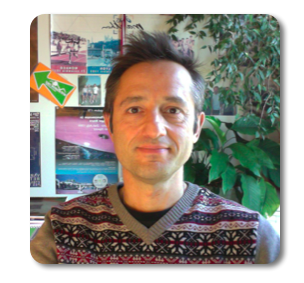LISA’s science objectives cover a wide range of outstanding questions in astrophysics, fundamental physics and cosmology. LISA is unique in that it will be sensitive to Massive Black Hole mergers across the Universe, directly probing the origin of Massive Black Holes and their growth and important role in galaxy evolution. Some of these sources will have signal-to-noise ratios as large as 1000, providing exquisite tests of General Relativity and the nature of event horizons. Multi-messenger observations will provide additional information about matter surrounding the mergers and a test of the propagation of gravitational waves. Stellar mass compact objects surrounding Massive Black Holes give rise to extreme mass-ratio inspiral signals, unique for LISA, that probe the stellar population in the central regions of galaxies and measure the mass and spin of the Massive Black Hole. They are also outstanding sources to map the detailed structure of the spacetime metric of the central Massive Black Hole, allowing tests of the no-hair theorem, the existence of additional fields and other alternative Gravity theories. LISA is guaranteed to detect a large number of Galactic sources, consisting of binary and multiple compact objects, which will give detailed insight into the final stages of stellar binary evolution, into the physics of tides and mass transfer, and can be used as independent probes of Galactic structure. Stellar-mass Black Hole binaries can be detected in the nearby Universe and can evolve from the LISA measurement band into that of the ground-based detectors, potentially yielding multi-band gravitational wave sources. Because gravitational waves provide a direct distance measurement of the source, LISA will determine the expansion of the Universe in a complementary way to Euclid and other cosmological probes. Finally, there are several potential stochastic signals from collective phenomena in the Early Universe, such as first-order phase transitions, that, if detected, would provide the unique direct measurement of the first seconds after the Big Bang.
France is a major contributor to LISA, including the responsibility for the coordination of the data analysis, though the Distributed Data Processing Center (DDPC). The Observatoire de la Côte d'Azur is responsible for the pipelines creating the final data products (e.g. catalogs). For any question, contact Astrid Lamberts (co-PI LISA-Frace, Coordinator of the DDPC catalog production).
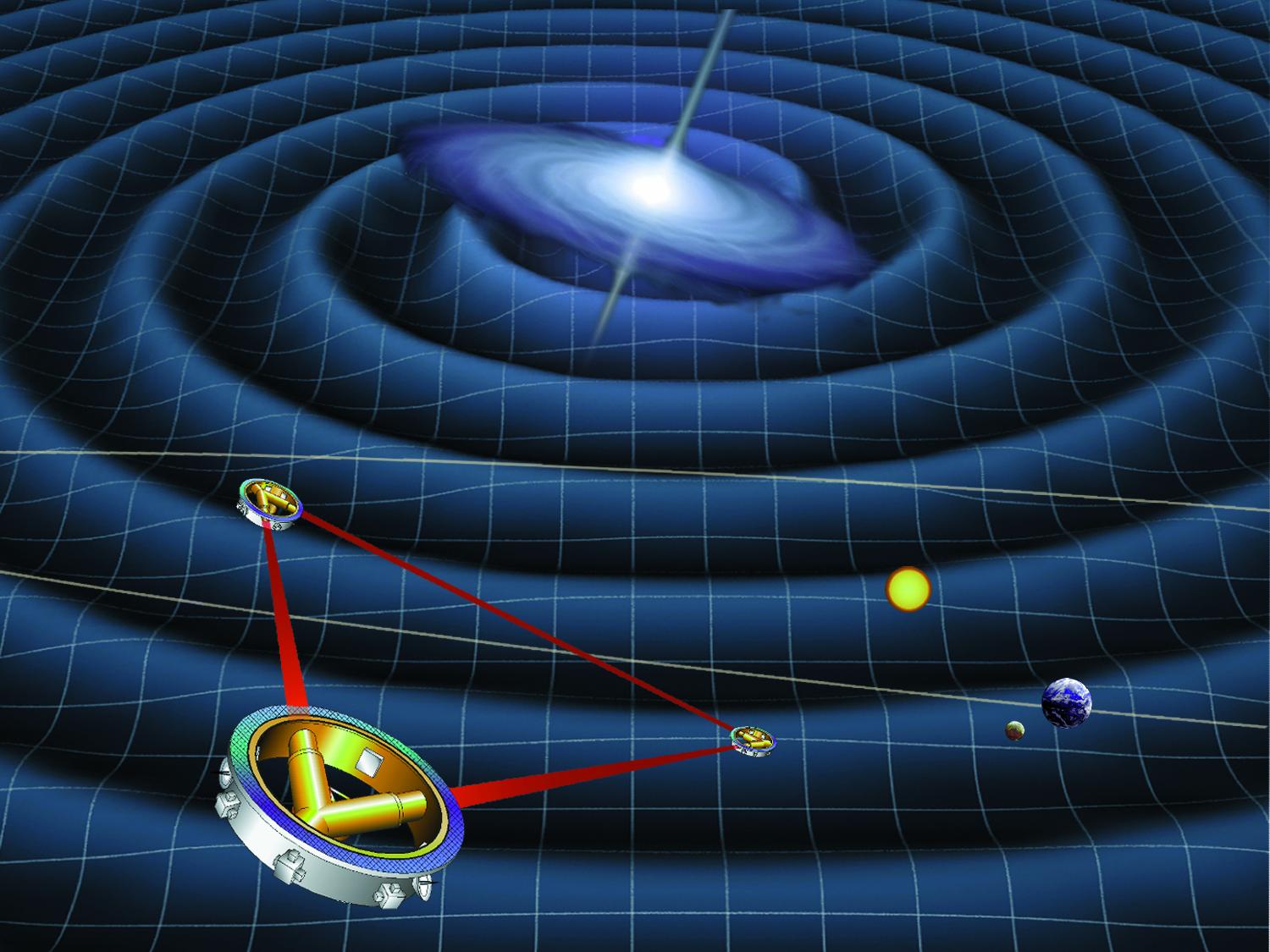
- L'ANR MOSAIC dans laquelle le Laboratoire Lagrange et l'équipe P2S constitue un des partenaires est acceptée
- Nardetto Nicolas Team Leader (Directeur de Recherche, CNRS)
|
|
Nicolas NARDETTO Team Leader
|
_________________________________________________________________________
| Staff - | Postdocs - | Ph.D. - | Emeritus/Benevoles - | Former Staff - | Former Ph.D. & Postdocs |
_________________________________________________________________________
Staff (Alphabetical order)
 |
Philippe Bendjoya
|
 |
Lionel Bigot
|
 |
Andrea Chiavassa
|
 |
Thierry Corbard
|
 |
Orlagh Creevey
|
Armando Domiciano de Souza
|
|
 |
Marianne Faurobert
|
Eric Lagadec
|
|
|
Astrid Lamberts
|
|
 |
Anthony Meilland
|
Djamel Mékarnia
|
|
 |
Florentin Millour
|
 |
Denis Mourard
|
Gilles Niccolini
|
|
|
|
Philippe Stee
|
_________________________________________________________________________________
Postdocs
|
Mathis Houlle
|
|
|
Roxanne Ligi
|
|
|
Romina Ibanez
|
|
|
Shanika Galaudage
|
_________________________________________________________________________________
Emeritus/Benevoles
Pierre Morel
|
|
Janine Provost
|
|
Rabbia Yves
|
|
 |
Frédéric Thévenin
|
Alain Chelli
|
|
Farrokh Vakili
|
|
Eric Fossat
|
_________________________________________________________________________________
PhD students
Maria Chiara MAIMONE
|
|
Dinil Bose Palakkatharappil
|
|
Cyril Pannetier
|
|
Jérémy Perdigon
|
|
Julien Drevon
|
|
Rahul Srinivasan
|
|
Bruel Tristan
|
|
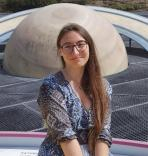 |
Margaux Abello
|
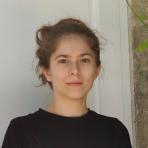 |
Elysabeth Beguin
|
Juraj Jonak
|
_________________________________________________________________________________
Former Staff
Eric Chapellier
|
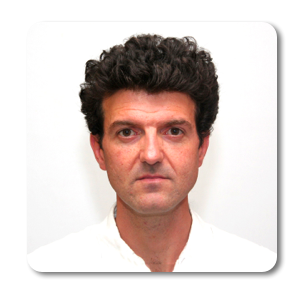 |
Luc Dessart
|
Thierry Lanz
|
|
 |
Claire Michaut
|
Olga Suarez
|
________________________________________________________________________________
Former Ph.D. & Postdocs (since 2010)
Rabah Ikhlef
|
|
Zeinab Khorrami
|
|
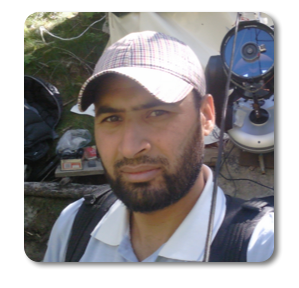 |
Mounir Challouf
|
Daniel Mac Donald
|
|
Kateryna Kravchenko
|
|
Roxanne Ligi
|
|
Sergey Lisakov
|
|
Marc-Antoine Martinod
|
|
 |
Thibault Merle
|
David Salabert
|
|
Luca Santoro
|
|
Anthony Soulain
|
|
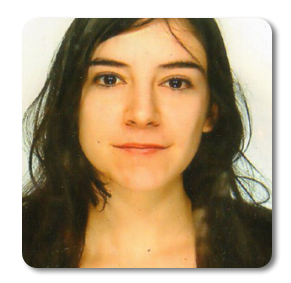 |
Sophia Sulis
|
Elisson Saldanha
|
|
Kevin Bouchaud
|
|
Vincent Hocdé
|
|
 |
Anthony Salsi
|
|
Fabien Patru
|
|
|
Simone Mastrogiovanni
|
|
 |
Fabian Menezes
|
updated on 2021-12-06
L'équipe accueille cette Automne 1 nouveau thésard:
- Julien DREVON: Exploitation de l'instrument MATISSE/VLTI: imagerie des étoiles évoluées (encadrants: P. Cruzaleves et F. Millour)
- Astrid Lamberts est recrutée au CNRS et intégre l'équipe de Physique Stellaire et Solaire ! Bravo Astrid !
HDUST (A. Carciofi) : Code de transfert radiatif Monte Carlo incluant gaz et poussière. Ce code permet d’obtenir des spectres et des cartes d’intensité en lumière naturelle et/ou polarisée. Ce code a besoin d’une puissance de calcul considérable pour que l’on puisse exploiter pleinement ces capacités. La version parallèle du code HDUST a donc été installée sur le Mésocentre SIGAMM (Simulations Intensives en Géophysique, Astronomie, Mécanique et Mathématiques) pour utilisation par les chercheurs de l’équipe Stellaire. L’accès à ce code très complet a été possible grâce au programme de collaboration internationale PICS France-Brésil.
Création d’une grille de modèles de disques de gaz et poussière autour des étoiles massives. Exemple d’images (cartes d’intensités) calculés en utilisant le mésocentre par A. Domiciano de Souza & A. Carciofi.
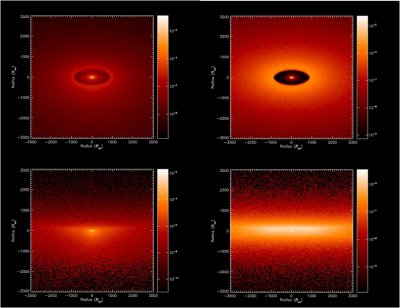
Ces images montrent une étoile chaude centrale (température 20000 K; type spectrale B) entourée d’un disque composé de gaz (hydrogène) et de poussière (composition de silicates avec une distribution de tailles entre 1 a 50 microns). Ce modèle physique d’étoile B[e] a été calculé par un code de transfert radiatif par méthode Monte Carlo (code HDUST). Plusieurs paramètres physiques contrôlent la structure physique du disque. Les images montrées ici ont été calculées pour deux inclinaisons du système par rapport à l’observateur (60° et 85°) et pour des longueurs d’onde dans le visible (de 0.6 à 1.2 microns) et dans l’infra-rouge thermique (entre 10 et 11 microns). On voit des différences dans ces images correspondant à des effets géométriques et aussi physiques dus à des variations des contributions relatives de l’étoile B, de l’émission du gaz ionisé dans la partie centrale, et de la poussière (formée à partir d’une distance limite où la température de la poussière est inférieure à 1500 K).
Ces images basées sur un modèle physique sont essentielles pour interpréter des observations en haute résolution angulaire avec des spectro-interférométres tels que VEGA/CHARA, VLTI/AMBER, VLTI/MIDI, VLTI/MATISSE (instrument de deuxième génération).
Publications
Domiciano de Souza, A. and Carciofi, A.C., «Grid of Supergiant B[e] Models from HDUST Radiative Transfer», Circumstellar Dynamics at High Resolution, Proceedings of a Joint ESP/Brazilian Workshop held at Foz do Iguacu, Brazil, 27 February-2 March, 2012, ASP Conference Series vol. 464, p. 149 (2012) (url)

Olivier’s favourite objects
- Novae
- Hypergiant stars
- ...
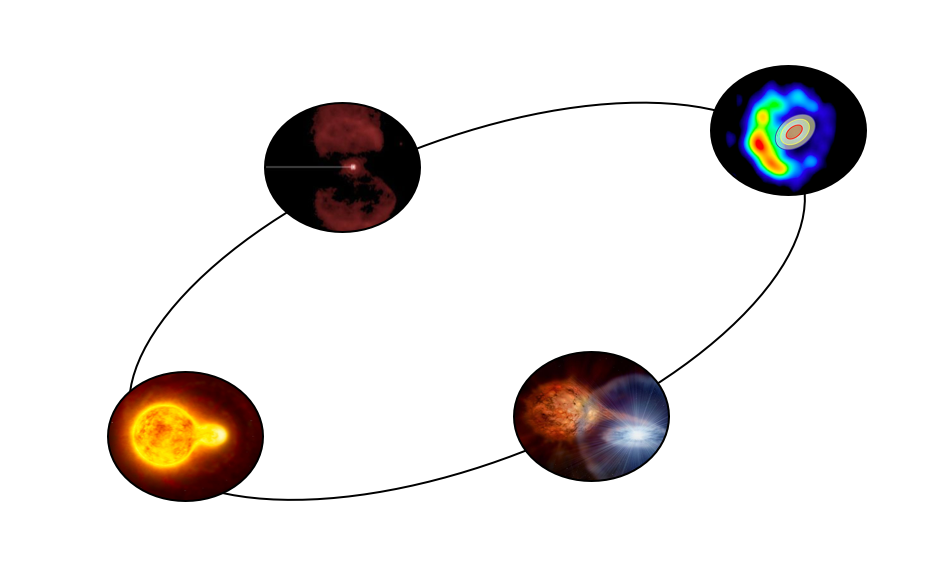
Afin de rendre hommage à la contribution d'Olivier Chesneau pour la recherche en astronomie,
le laboratoire Lagrange à l'Observatoire de la Côte d'Azur et l'ESO ont décidé de créer un prix à son nom.
Le prix Olivier Chesneau est décerné tous les deux ans depuis 2015
pour la meilleure thèse de doctorat d'astrophysique soutenue les deux années précédentes, dans un institut européen et dans le domaine de la haute résolution angulaire visible/infrarouge (par exemple en interférométrie, optique adaptative...).
lien sur le site The Chesneau Prize
UMR LAGRANGE
Observatoire de la Côte d’Azur
Boulevard de l’Observatoire
CS 34229 - F 06304 NICE Cedex 4
Tél. : +33 (0)4 92 00 30 11
Fax : +33 (0)4 92 00 30 33




